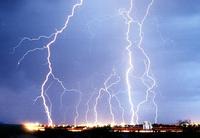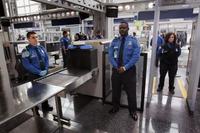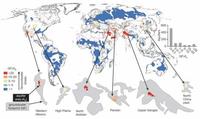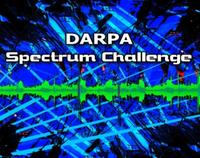-
Alabama State launches Nuclear Academy
A new academy at Alabama State University (ASU) will enhance security at nuclear, electric, and green-energy power installations across the United States and abroad. The new academy will provide comprehensive training for current and future security professionals who will offer infrastructure protection services to nuclear, electric and green-energy power installations.
-
-
Arbor Day meets Kyoto: Tree planting promotes carbon capture, green neighborhoods
Schemes which offer economic incentives for growing trees for carbon present an opportunity to reverse trends in land clearing but also to restore ecosystem services — such as pest control, pollination, soil and water conservation. Best practice carbon farming that considers more than just the carbon in trees is thus needed if the full benefits of trees in the landscape are to be realized by farmers, landholders, and the community.
-
-
Innovations help lighten the load for marines
The Office of Naval Research (ONR) was at the Modern Day Marine exposition last week, showcasing some of the newest technologies it has helped develop to give sailors and marines the edge. The Expeditionary Maneuver Warfare and Combating Terrorism Department at ONR highlighted its focused initiatives to lighten the load for marines, including integrated day/night vision sights, scalable body armor, and other research which will help marines out-think, out-maneuver, and out-perform the enemy.
-
-
DARPA Young Faculty meet next generation of Army tech users
Recipients of the DARPA Young Faculty Award (YFA) visited the United States Military Academy at West Point during its first Branch Week, 10-15 September 2013. The event brought “several hundred tons of military equipment, vehicles and weapons for the academy’s spin on a college career fair,” one observer said.
-
-
U.S. to face an increased risk of severe thunderstorms

Severe thunderstorms, often exhibiting destructive rainfall, hail and tornadoes, are one of the primary causes of catastrophic losses in the United States. In 2012, eleven weather disasters in the United States crossed the billion-dollar threshold in economic losses. Seven of those events were related to severe thunderstorms. New climate analyses indicate that global warming is likely to cause a robust increase in the conditions that produce these types of storms across much of the country over the next century.
-
-
Calculating emissions, costs of increased wind, solar in the West
New research quantifies the potential impacts of increasing wind and solar power generation on the operators of fossil-fueled power plants in the West. To accommodate higher amounts of wind and solar power on the electric grid, utilities must ramp down and ramp up or stop and start conventional generators more frequently to provide reliable power for their customers — a practice called cycling.
-
-
DHS finds no racial profiling at Logan Airport

An August 2012 allegation of racial profiling by Transportation Security Administration (TSA) officers sparked an investigation into the screening practices of TSA officers at Logan International Airport. DHS has recently concluded an investigation into allegations, and concluded that there was no evidence that TSA officers in Boston have been targeting minorities for additional screening to meet quotas.
-
-
ASIS releases updated, expanded edition of “Career Opportunities in Security”
ASIS International (ASIS) announced the publication of the updated and expanded new edition of Career Opportunities in Security. The 36-page booklet provides information of interest to those seeking to learn more about security, and serves as a resource to those considering a career in security management, or wanting to further their existing careers in the industry.
-
-
Conference marks opening of UMass Lowell’s new Center for Terrorism and Security Studies
Top counterterrorism and law enforcement officials and leading researchers are today (Tuesday) gathering at UMass Lowell to discuss the challenges they face in protecting the public and their work to find solutions to security threats. The event marks the opening of UMass Lowell’s new Center for Terrorism and Security Studies.
-
-
“In 30 years Iran will be a ghost town” if the country’s water situation does not improve

Issa Kalantari, a former agriculture minister during the presidency of Ayatollah Hashemi Rafsanjani and currently and advisor to President Hassan Rouhani’s cabinet, says Iran’s water crisis was especially grave. “Our main problem that threatens us, that is more dangerous than Israel, America or political fighting, is the issue of living in Iran. It is that the Iranian plateau is becoming uninhabitable”; “If this situation is not reformed, in 30 years Iran will be a ghost town.”
-
-
ASIS Foundation contributes to Chicago Public School’s security enhancements
On Friday, 20 September, the ASIS Foundation presented Spencer Technology Academy, in the Chicago Public Schools (CPS), a donation of $42,450 for security improvements. Spencer Technology Academy is the winner of the ASIS Foundation’s School Security Funding Competition. Through a series of short essays, schools in CPS were asked to consider their particular security concerns and what risks they would attempt to reduce or eliminate, along with a list of specific security enhancements they would purchase with the funding.
-
-
Missed opportunities to save water, energy
Water and wastewater managers are missing substantial opportunities to save energy and money, according to a new report.The report also identifies significant gaps in knowledge about the amount of water used to extract energy resources such as natural gas, oil, and coal, and to generate electricity.
-
-
Teams show robust radio techniques at Spectrum Challenge event

Radios are used for a wide range of tasks, from the most mundane to the most critical of communications, from garage door openers to first responders to military operations. Wireless devices often inadvertently interfere with and disrupt radio communications, and in battlefield environments adversaries may intentionally jam friendly communications. To stimulate the development of radio techniques that can overcome these impediments, the agency launched its Spectrum Challenge — a competitive demonstration of robust radio technologies that seek to communicate reliably in congested and contested electromagnetic environments without direct coordination or spectrum preplanning.
-
-
Congress urged to support broad legislative agenda for science
With the U.S. Senate poised to revisit S. 1392, the Energy Savings and Industrial Competitiveness Act of 2013, the American Chemical Society (ACS) announced its support for the bill as part of a larger, legislative science agenda for 2013.
-
-
Flood insurance is not available to Canadian homeowners – should it be?
Canada is the only G8 country in which insurance against overland flooding is not available to homeowners — but does it have to remain that way? A study released Monday explores issues related to flooding and property insurance, aiming to advance informed discussion of the potential better to protect Canadian homeowners. It reveals that while insurance executives are concerned about the lack of flood insurance and agree on many of the associated issues, opinions remain mixed concerning its viability in Canada.
-
More headlines
The long view
A Shining Star in a Contentious Legacy: Could Marty Makary Be the Saving Grace of a Divisive Presidency?
While much of the Trump administration has sparked controversy, the FDA’s consumer-first reforms may be remembered as its brightest legacy. From AI-driven drug reviews to bans on artificial dyes, the FDA’s agenda resonates with the public in ways few Trump-era policies have.
Risk Assessment with Machine Learning
Researchers utilize geological survey data and machine learning algorithms for accurately predicting liquefaction risk in earthquake-prone areas.
Foundation for U.S. Breakthroughs Feels Shakier to Researchers
With each dollar of its grants, the National Institutes of Health —the world’s largest funder of biomedical research —generates, on average, $2.56 worth of economic activity across all 50 states. NIH grants also support more than 400,000 U.S. jobs, and have been a central force in establishing the country’s dominance in medical research. Waves of funding cuts and grant terminations under the second Trump administration are a threat to the U.S. status as driver of scientific progress, and to the nation’s economy.
The True Cost of Abandoning Science
“We now face a choice: to remain at the vanguard of scientific inquiry through sound investment, or to cede our leadership and watch others answer the big questions that have confounded humanity for millennia —and reap the rewards.”
Bookshelf: Smartphones Shape War in Hyperconnected World
The smartphone is helping to shape the conduct and representation of contemporary war. A new book argues that as an operative device, the smartphone is now “being used as a central weapon of war.”
New Approach Detects Adversarial Attacks in Multimodal AI Systems
New vulnerabilities have emerged with the rapid advancement and adoption of multimodal foundational AI models, significantly expanding the potential for cybersecurity attacks. Topological signatures key to revealing attacks, identifying origins of threats.
